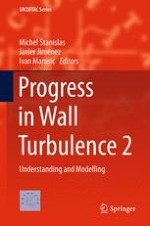2016 | OriginalPaper | Buchkapitel
Statistical and Temporal Characterization of Turbulent Rayleigh-Bénard Convection Boundary Layers Using Time-Resolved PIV Measurements
verfasst von : Christian E. Willert, Ronald du Puits, Christian Resagk
Erschienen in: Progress in Wall Turbulence 2
Aktivieren Sie unsere intelligente Suche, um passende Fachinhalte oder Patente zu finden.
Wählen Sie Textabschnitte aus um mit Künstlicher Intelligenz passenden Patente zu finden. powered by
Markieren Sie Textabschnitte, um KI-gestützt weitere passende Inhalte zu finden. powered by
